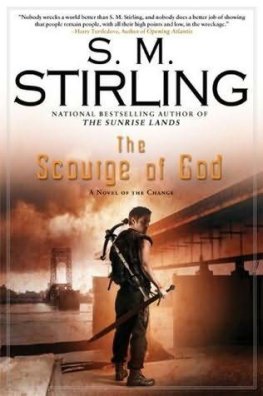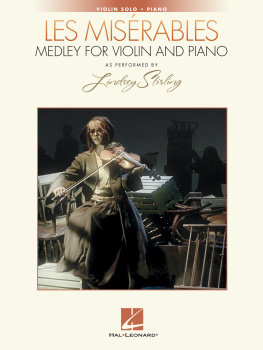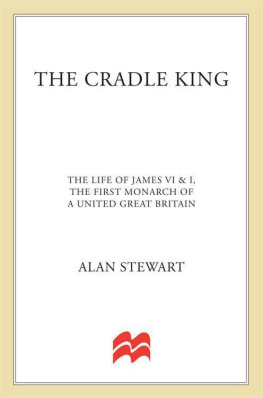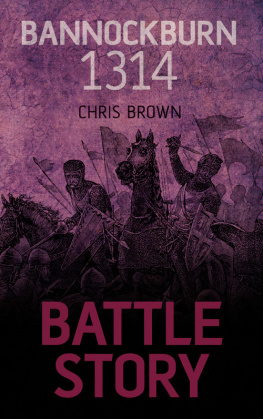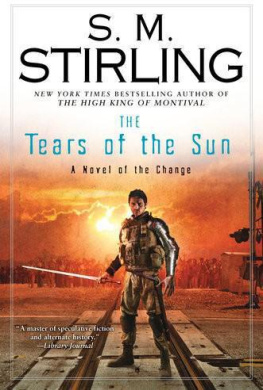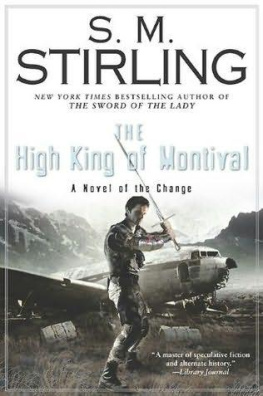Transcribers Note: Cover created by Transcriber, using an image from the original book, and place into the Public Domain.
STIRLING CASTLE
PUBLISHED BY
JAMES MACLEHOSE AND SONS, GLASGOW,
Publishers to the University.
MACMILLAN AND CO., LTD., LONDON.
| New York, | The Macmillan Co. |
| Toronto, | The Macmillan Co. of Canada. |
| London, | Simpkin, Hamilton and Co. |
| Cambridge, | Bowes and Bowes. |
| Edinburgh, | Douglas and Foulis. |
| Sydney, | Angus and Robertson. |
MCMXIII.
STIRLING CASTLE.
STIRLING CASTLE
ITS PLACE IN SCOTTISH HISTORY
BY
ERIC STAIR-KERR
M.A. Edin. and Oxon., F.S.A. Scot.
AUTHOR OF SCOTLAND UNDER JAMES IV
WITH EIGHTEEN ILLUSTRATIONS BY
HUGH ARMSTRONG CAMERON
GLASGOW
JAMES MACLEHOSE AND SONS
PUBLISHERS TO THE UNIVERSITY
1913
PREFACE
Stirling Castle is a many-sided subject that can be treated in more than one way. The story of the castle might be dealt with in a book divided into sections, each one taking up a special part, such as Military History, Stirling as a Royal Palace, Notable Visitors, etc.; but I have thought it better to set forth the whole of the castles history in chronological order, and, after discussing the buildings and their associations, to bring together the salient events connected with the three chief Scottish strongholds, and to record what the poets have said about Stirling.
With regard to dates, for the sake of simplicity I have adopted the historical computation; that is to say, the years have been reckoned as if they had always begun on the 1st of January and not on the 25th of March, as was the rule in Scotland until 1600. For example, the date of Prince Henrys birth is given as February, 1594, although the event was considered at the time to belong to the year 1593.
I am glad to express here my thanks to my uncle, the Rev. Eric Robertson, for suggesting that I should undertake this work, and for valuable hints given from time to time; to Mr. David B. Morris, Stirling, who has always responded most willingly to any appeal for help, and who has kindly read the proofs; and to Mr. James Hyslop, Edinburgh, for guidance in the subject of the buildings of the castle. To the artist, Mr. Cameron, I am grateful for the whole-hearted interest which he has taken in my part of the work as well as in his own.
E. S. K.
CONTENTS
| CHAPTER | PAGE |
| I. | Early History |
| II. | The War of Independence |
| III. | The Early Stewarts |
| IV. | James V. and Mary |
| V. | James VI. |
| VI. | Later History |
| VII. | The Buildings, the Park, and the Bridge |
| VIII. | The Associations of the Buildings |
| IX. | Stirlings Position with regard to other Castles |
| X. | Stirling Castle in Poetry |
| Index |
ILLUSTRATIONS
| PAGE |
| Stirling Castle |
| The Highlands from Stirling Castle |
| The Abbey Craig and River Forth |
| Stirling Castle from Bannockburn |
*The Prospect of Stirling Castle
From Engraving by Captain John Slezer, circa 1693. |
| The Douglas Window |
| James IV.s Gateway (where Margaret Tudor defied the Commissioners) |
| The Pass of Ballengeich |
| The Keep and the Princes Walk |
| The Chapel Royal |
*Stirling Castle
From Engraving by Robert Sayer, 1753. |
| Turret on Queen Annes Battery |
| The Old Mint |
| Portcullis in James IV.s Gateway |
| James V. as the Gudeman o Ballengeich |
*The Prospect of Their Majesties Castle of Stirling
From Engraving by Captain John Slezer, 1693. |
| Stirling Old Bridge |
| The Parliament House |
| Old Entrance from Ballengeich |
| Old Buildings in Upper Square |
| A Chimney of the Palace |
All the Illustrations, with the exception of
the three marked with an asterisk, are by
Mr. Hugh Armstrong Cameron.
CHAPTER I.
EARLY HISTORY.
For many centuries travellers have been struck by the remarkable resemblance which Stirling bears to Edinburgh. In each case there is a castle perched on a precipitous rock, and a town built on a narrow ridge that slopes from the crag to the plain. That two places so much alike in situation should be found in Scotland, and but thirty miles apart, may seem a matter for wonder, but a word or two on the geology of the district may help to explain how the similarity arose.
During the Great Ice Age, when the physical features of Scotland were moulded into almost their present form, the extensive plain of the River Forth was filled by a giant glacier, which swept down from the Highland hills to the lower land on the south and east, clearing the softer rocks from its path and exposing the hard basalt of igneous sheets and old volcanic necks. These great eruptive obstructions withstood the pressure of the eastward-moving mass of ice, and so prevented the ground on their lee sides from being subjected to the scouring action that hollowed out the land on the north and west and south. Numerous examples of this crag and tail formation are to be found in the track of the ancient glacier, but two of the rocks stand out with striking prominence; on one is built the Castle of Edinburgh, on the other that of Stirling.
It is strange that of such natural strongholds early history has so little to say, for these fortresses were afterwards to have their names writ large on almost every page of Scotlands romantic story. The third sister castle, Dumbarton, came earlier to the front. It was a stronghold of renown in the days of the Strathclyde Britons; but as time wore on its importance diminished, and the place which it had held in the principality of Strathclyde was taken by Stirling and Edinburgh in the consolidated Kingdom of Scotland.
On the Gowan Hills, to the north of Stirling Castle, traces of an ancient fort show that the Britons considered it more important to defend the rising ground overlooking the River Forth than to occupy the crag, with its precipitous south-west face. When the Romans under Agricola attempted the conquest of northern Britain they constructed a chain of forts across the country, between the Firths of Forth and Clyde. The untrustworthy Boece asserts that Stirling was fortified at the time of those campaigns, but no real traces of their work have been discovered to prove that the Romans occupied the castle rock under Agricola in A.D. 8182, or when Lollius Urbicus, Governor of Britain for Antoninus Pius, erected the wall on the line of the earlier forts. Near the Pass of Ballengeich is the so-called Roman Stone, with its indistinct, almost unintelligible letters. Antiquaries of a former dayCamden, Sibbald and Horsleyconsidered the inscription genuine, but recent scholars are of opinion that the letters were carved many centuries after the departure of the legions from Britain. Again, the existence of a Roman causeway has not yet been proved. The natural supposition that a military road, connecting the camp at Ardoch with the south, passed near Stirling led to the belief that the highway crossed the Forth at Kildean, or higher up at the Ferry of Drip. No vestiges of a causeway of undoubted Roman origin have, however, been discovered either at the river or on the Field of Bannockburn, through which it was thought to have passed on its way to the station of Camelon.




